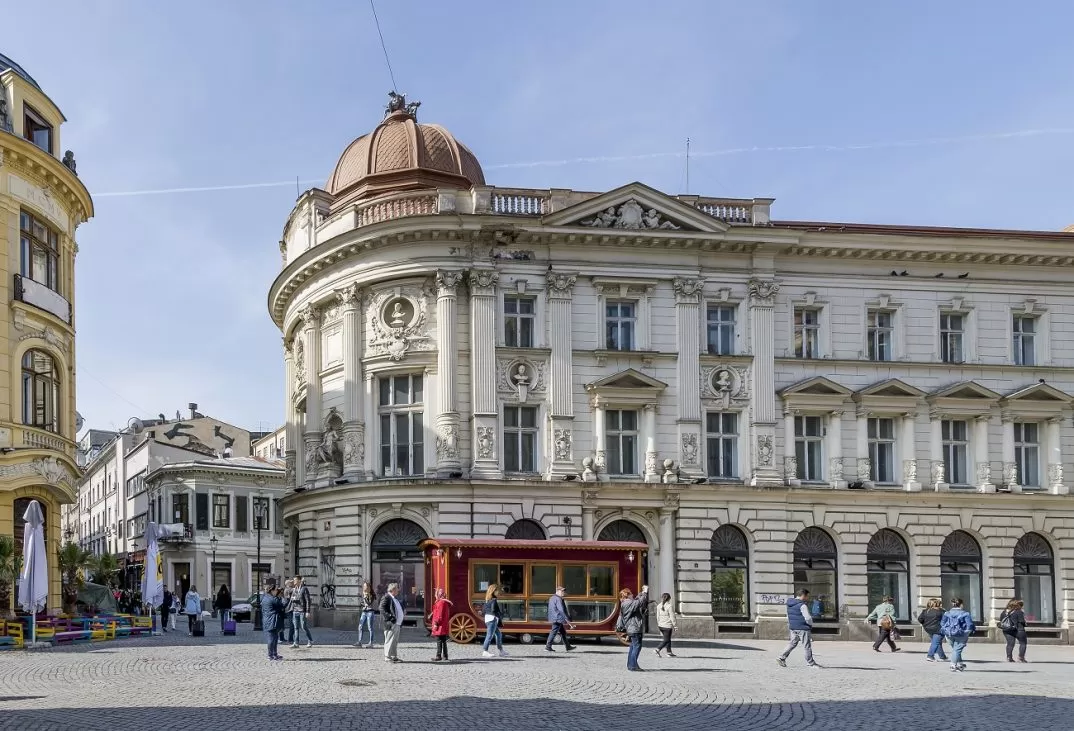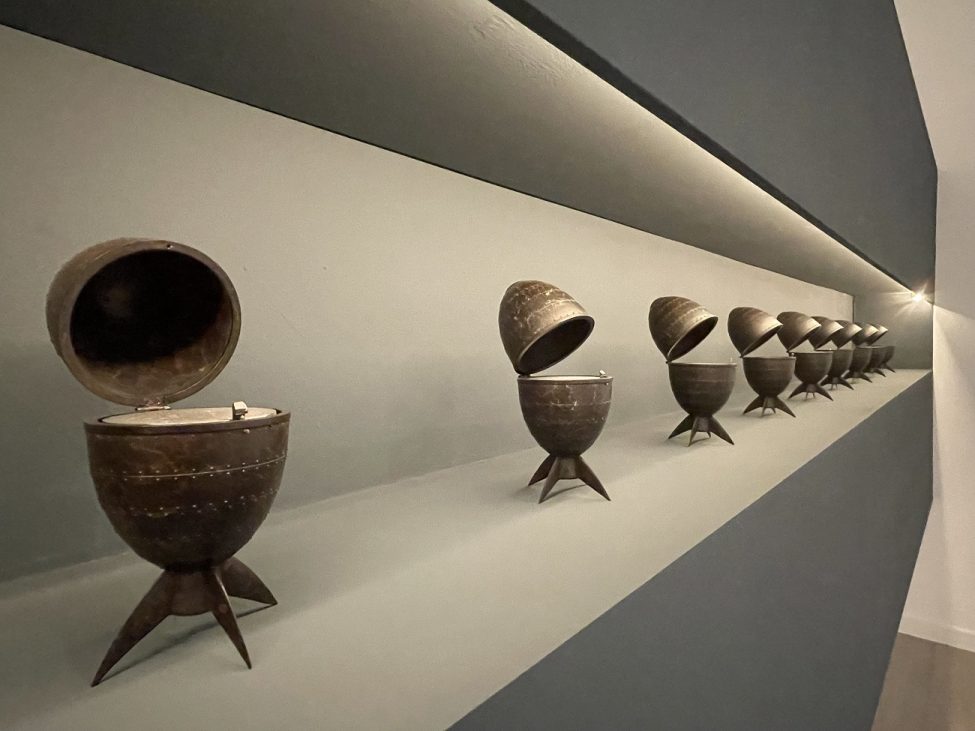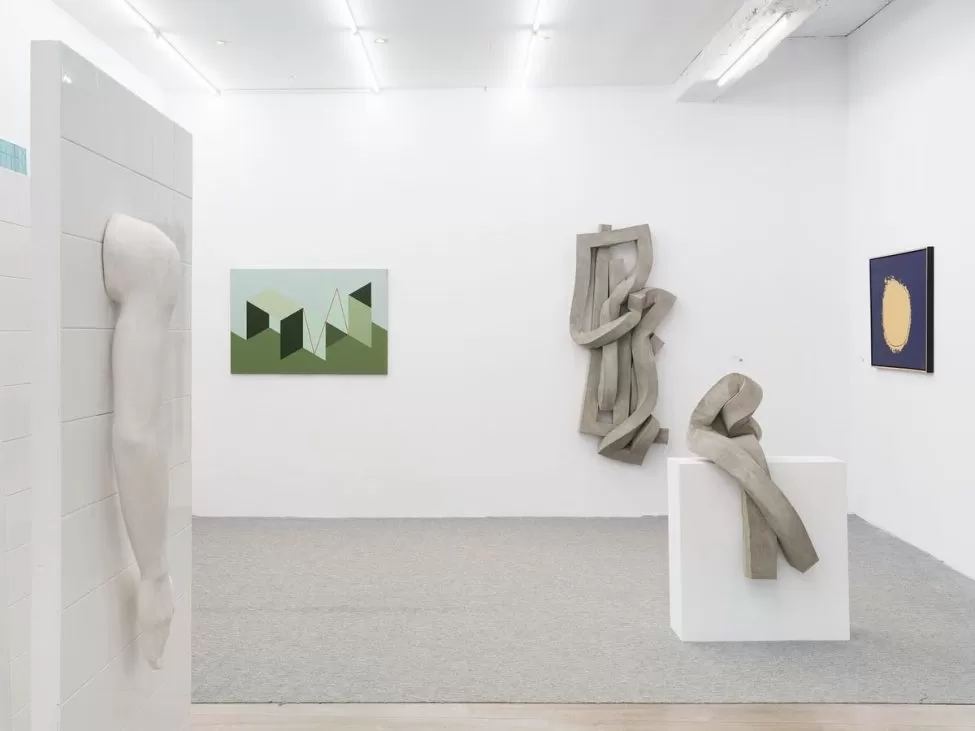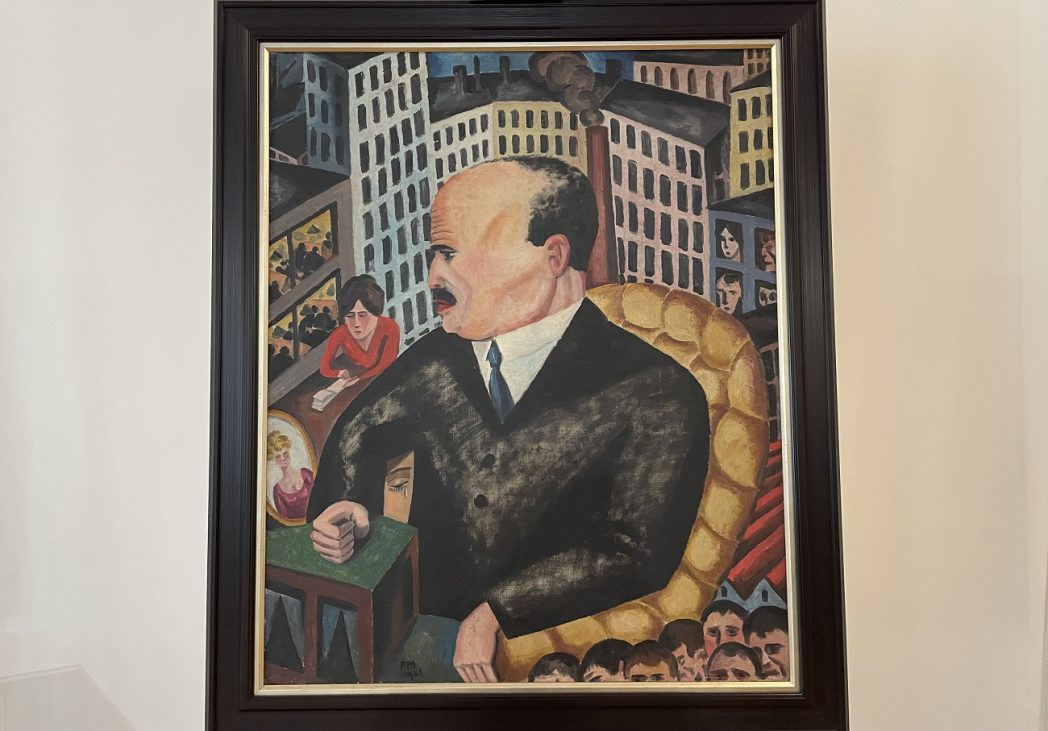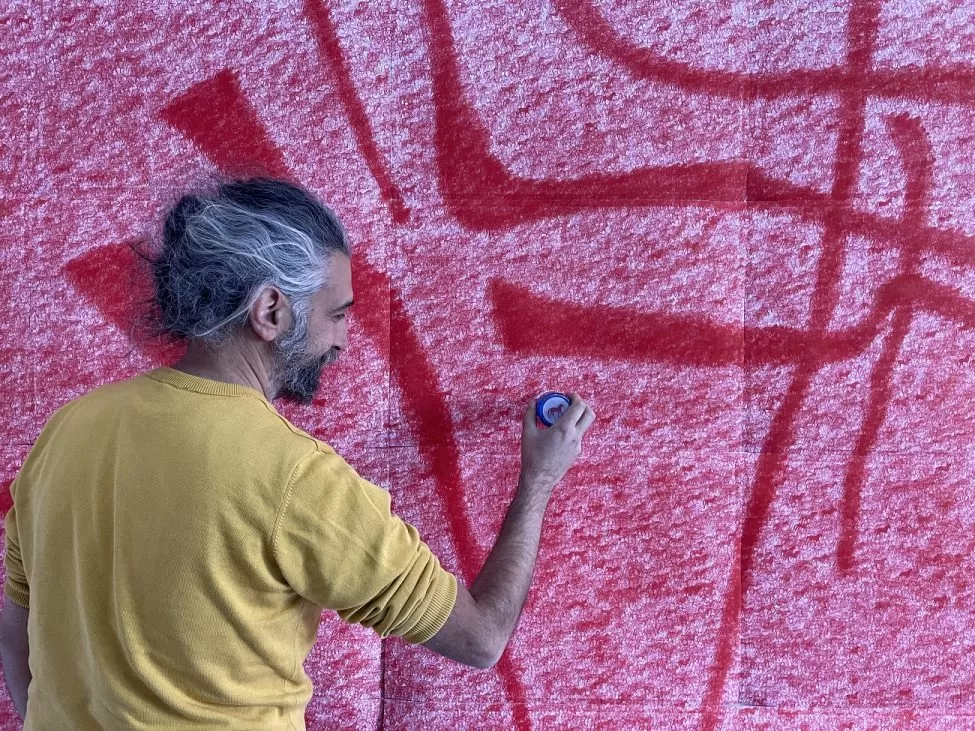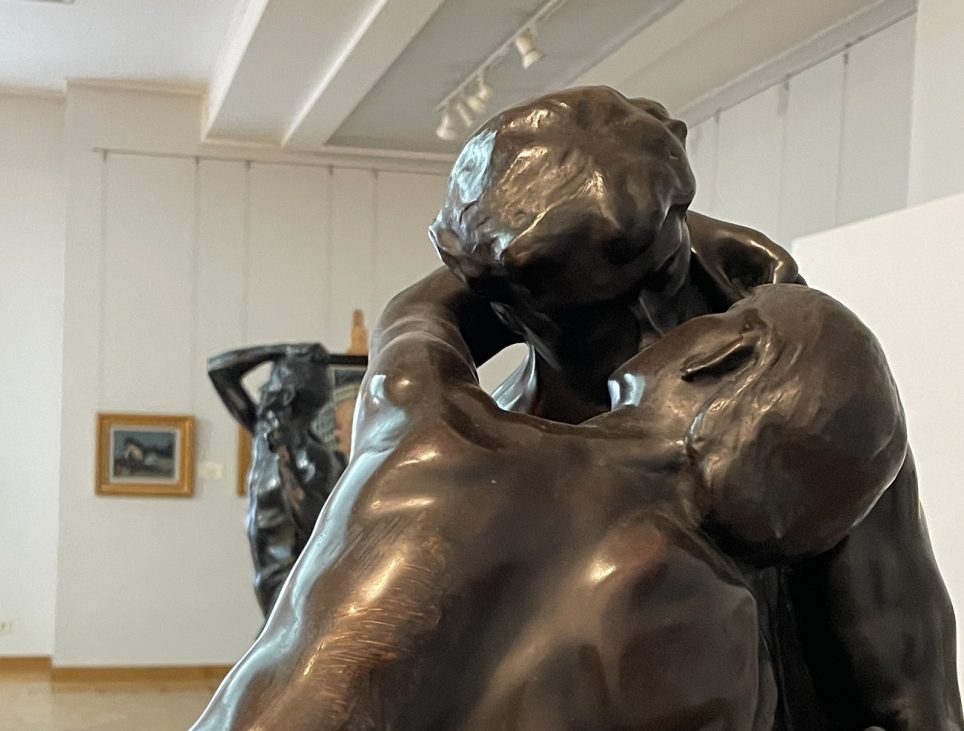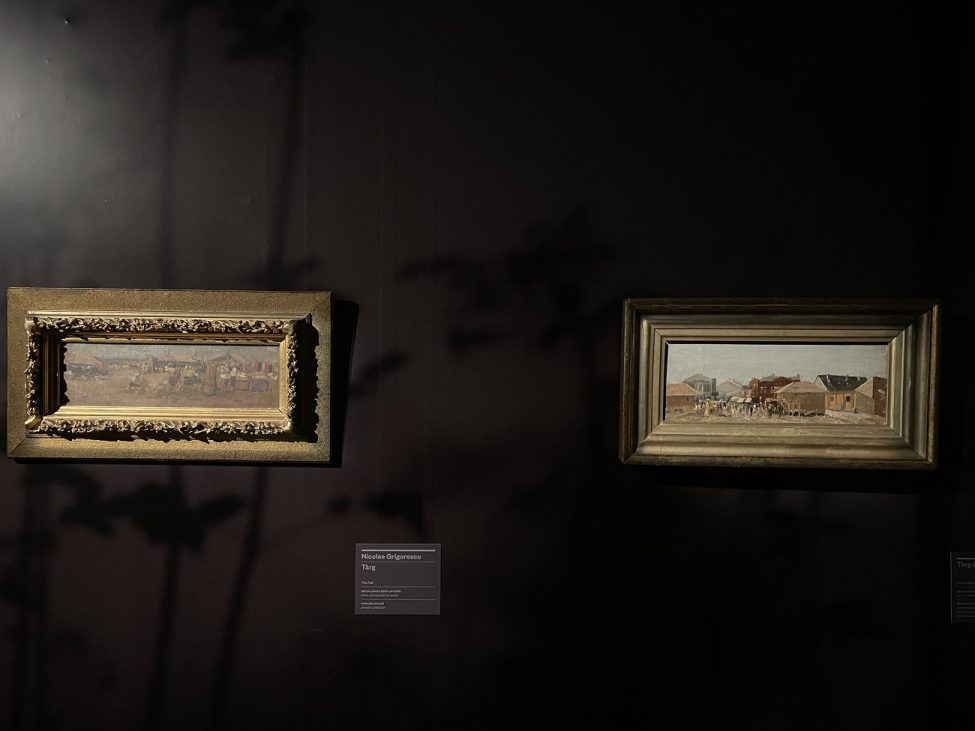Bucharest Pinacoteca, a long-discussed, sometimes forgotten project, is now on the verge of becoming a reality. In 2013, the General Council of Bucharest bought the Dacia-Romania Palace, and in 2019 it handed it over to the Bucharest Municipal Museum (MMB).
Bronze ammunition replicas of a small Cold War-era Russian nuclear bomb make up a sculptural installation entitled 'Archaeology of Absence'. The ten bronze and aluminium sculptures by Larissa Sansour are on display alongside photographs at the Art Encounters Biennale in
French artist Lauriane Obry offers new perspectives on the woven object through a research project that is being presented these days in Bucharest. In an interview for curatorial, she explains how she has combined new technologies with tapestry to allow the
Most Romanian art collectors are aged between 45 and 54, buy mainly paintings, own around twenty pieces and visit about two art fairs a year. For many, buying art is a moderate investment rather than a major financial commitment. These
"The Factory Manager", an oil on canvas donated to the Romanian state in 1949, is unique in the œuvre of Frans Masereel, about whom little is known. The artist distinguished himself as an engraver and book illustrator, an activist for
Horses killed in the First World War are depicted in an 82-meter-long work, a tribute to them and their fragility by artist Edi Constantin. In his studio at Malmaison, he has so far set 3.5 million stamps out of a total
“The Newest Olympia”, painted in 1930 by Corneliu Michăilescu, is a tribute-painting to Édouard Manet's “Olympia”. Moreover, it is a result, one might say, of the period when the Romanian artist collaborated with the renowned neurologist Gheorghe Marinescu. Michăilescu experimented
”The Bronze Age” sculpture, which entered the Royal Family Collection early last century, is based on a controversial original. Auguste Rodin (1840 - 1917) made several bronze versions, after struggling to sell the original in France. The work was exhibited
Ioan Andreescu, of whom Nicolae Grigorescu said that ‘he is the greatest artist the country has ever had’, also considering himself, was influenced by him. In 1873, having set out on the road with the modest idea of supporting himself
‘Finis Africae’, by Alexandru Crișan, the starting point of the exhibition ‘Roots’, a visual ode dedicated to the immovable material heritage, a meditation on the unchanged world that served as a source of inspiration for Constantin Brâncuși, can be seen





